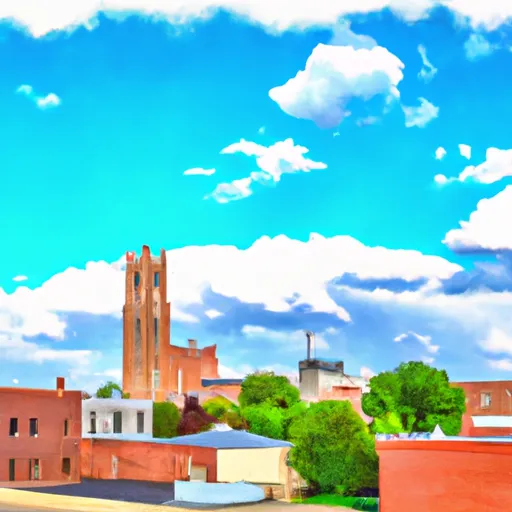-
 Snoflo Premium
Snoflo Premium
Get unlimited access to all our content
With no Ad interruptions! - Start Your Free Trial Login with existing account
Kingston
Eden Index
Climate
7.4
•
Recreation
4.2
•
Community
2.5
•
Safeguard
5.0/10

Kingston, Illinois is a small village located in DeKalb County, in the northern part of the state. The climate in Kingston is characterized by cold winters and warm summers, typical of the Midwest region. The average winter temperature hovers around 25°F (-4°C), while summers can reach highs of 85°F (29°C). Precipitation is fairly evenly distributed throughout the year, with an average rainfall of 36 inches (91 cm) annually.
Hydrologically, Kingston is situated near the Kishwaukee River, which flows through the region. The river provides opportunities for various water-related activities, such as fishing, canoeing, and kayaking. Additionally, there are several nearby lakes and ponds that offer recreational opportunities for boating and swimming.
Outdoor enthusiasts in Kingston can also enjoy the village's parks and nature reserves. The Kingston Ledges Nature Preserve is a popular spot for hiking, birdwatching, and exploring unique geological formations. Additionally, there are numerous walking and biking trails throughout the area, allowing residents and visitors to experience the natural beauty of the surrounding countryside.
In conclusion, Kingston, Illinois offers a diverse climate, proximity to waterways, and a range of outdoor recreation opportunities, making it an attractive destination for nature lovers and outdoor enthusiasts.
What is the Eden Index?
The Snoflo Eden Index serves as a comprehensive rating system for regions, evaluating their desirability through a holistic assessment of climate health, outdoor recreation opportunities, and natural disaster risk, acknowledging the profound impact of these factors on livability and well-being.
Climate Health Indicator (CHI): 7.4
Kingston receives approximately
918mm of rain per year,
with humidity levels near 83%
and air temperatures averaging around
9°C.
Kingston has a plant hardyness factor of
5, meaning
plants and agriculture in this region thrive during a short period during spring and early summer. Most
plants will die off during the colder winter months.
By considering the ideal temperature range, reliable water supplies, clean air, and stable seasonal rain or snowpacks, the Climate Health Indicator (CHI) underscores the significance of a healthy climate as the foundation for quality living.
A healthy climate is paramount for ensuring a high quality of life and livability in a region, fostering both physical well-being and environmental harmony. This can be characterized by ideal temperatures, reliable access to water supplies, clean air, and consistent seasonal rain or snowpacks.
Weather Forecast
Streamflow Conditions
Rock
Area Rivers
Rock
Snowpack Depths
Rock
Reservoir Storage Capacity
Rock
Groundwater Levels
Recreational Opportunity Index (ROI): 4.2
The Recreational Opportunity Index (ROI) recognizes the value of outdoor recreational options, such as parks, hiking trails, camping sites, and fishing spots, while acknowledging that climate plays a pivotal role in ensuring the comfort and consistency of these experiences.
Access to outdoor recreational opportunities, encompassing activities such as parks, hiking, camping, and fishing, is crucial for overall well-being, and the climate plays a pivotal role in enabling and enhancing these experiences, ensuring that individuals can engage in nature-based activities comfortably and consistently.
Camping Areas
| Campground | Campsites | Reservations | Toilets | Showers | Elevation |
|---|---|---|---|---|---|
| Dunns Falls Water Park | None | 269 ft | |||
| Friends Creek Regional Park | 35 | 693 ft | |||
| Clarkco State Park | None | 273 ft | |||
| Twiltley Branch - Okatibbee Lake | None | 421 ft | |||
| Sam Dale Lake Conservation Area | None | 493 ft | |||
| Stephen A. Forbes State Park | 135 | 604 ft | |||
| Faries Park | 37 | 618 ft | |||
| Archusa Creek Waterpark | 69 | 315 ft | |||
| Opossum Creek - Shelbyville Lake | 80 | 654 ft | |||
| Coon Creek - Shelbyville Lake | 230 | 666 ft |
Nearby Ski Areas
Catastrophe Safeguard Index (CSI):
The Catastrophe Safeguard Index (CSI) recognizes that natural disaster risk, encompassing floods, fires, hurricanes, and tornadoes, can drastically affect safety and the overall appeal of an area.
The level of natural disaster risk in a region significantly affects safety and the overall livability, with climate change amplifying these risks by potentially increasing the frequency and intensity of events like floods, fires, hurricanes, and tornadoes, thereby posing substantial challenges to community resilience and well-being.
Community Resilience Indicator (CRI): 2.5
The Community Resilience Indicator (CRI) recognizes that education, healthcare, and socioeconomics are crucial to the well-being of a region. The CRI acknowledges the profound impact of these elements on residents' overall quality of life. By evaluating educational resources, healthcare accessibility, and economic inclusivity, the index captures the essential aspects that contribute to a thriving community, fostering resident satisfaction, equity, and social cohesion.

